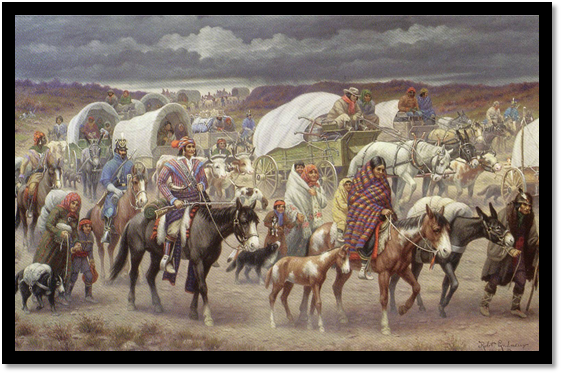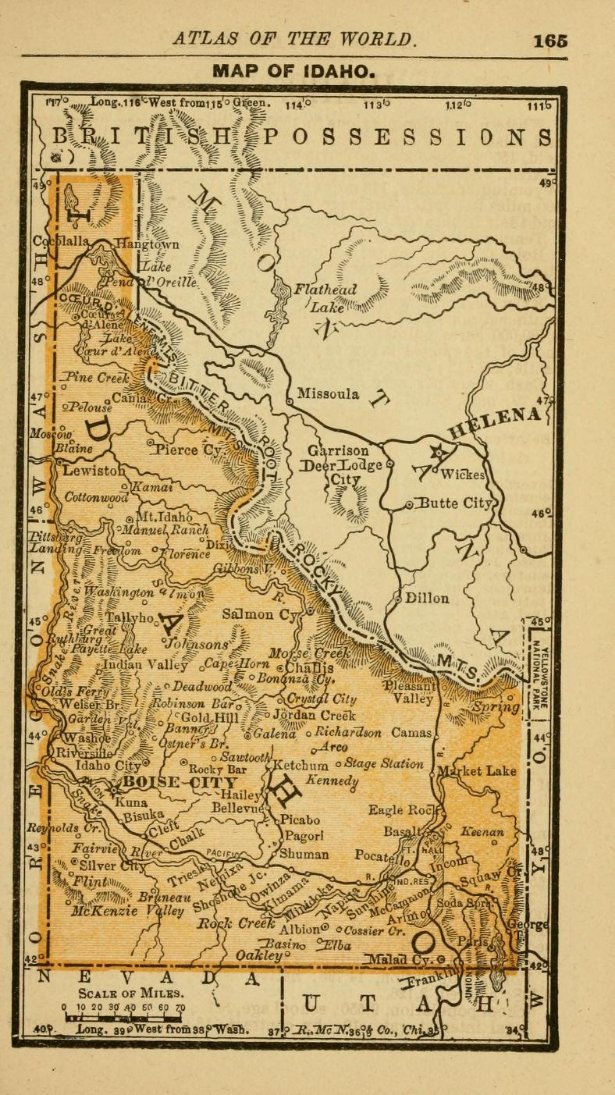Discover and read the best of Twitter Threads about #50Weeks50Constitutions
Most recents (24)
1. This week’s edition of #50Weeks50Constitutions leaves the lower 48 to explore the constitutional history of the 49th State. Alaska, the #LastFrontier, was admitted in January 1959, the first state admitted in over four decades!
2. The U.S. bought the land from the Russians in 1867, who had used it as a fur wardrobe since Vitus Bering’s crew first stepped foot in 1741 (& treated native Alaskans no better in the process). You can read about Bering’s amazing story here:
amazon.com/dp/B076MPT3L6/…
amazon.com/dp/B076MPT3L6/…
3. Other than Alaskan natives, the land was sparsely populated & the government seemingly uninterested in it. Its slow response to an 1879 attack on one of the few settlements was long remembered by many Alaskans and led to longstanding distrust.
1. This week’s edition of #50Weeks50Constitutions explores the constitutional history of the #GrandCanyonState. Arizona, the 48th state, was admitted on Valentines’ Day 1912 after being a territory for over 50 years.
2. The U.S. acquired most of what is now Arizona in the 1848 treaty of Guadalupe-Hidalgo. The land was originally part of the New Mexico territory, but Congress created a separate Arizona territory in 1863 after the Confederacy tried to take it over.
ushistoryscene.com/article/the-ci…
ushistoryscene.com/article/the-ci…
3. But it took a while for the Arizona statehood movement to really get going. There was some interest in 1872 in the state, but it was clear that Congress had none at the moment due to the remoteness of the territory and the small population at that time.
1. New Mexico, the land of alien landings (allegedly), is this week’s stop for #50Weeks50Constitutions. New Mexico, the #LandofEnchantment has only had a single constitution—but there were a few drafts before Congress admitted it to the Union in 1912.
1. Oklahoma isn’t just football, oil, & musicals. The state itself has had just one constitution, although big enough to accommodate several more, but today on #50Weeks50Constitutions we’ll also look at a century of constitutional history leading up to that founding document.
1. This week #50Weeks50Constitutions travels to Utah. The journey to statehood, & a state constitution, began in the 1840’s when members of the LDS church arrived and settled. But it took numerous constitutional conventions, and many petitions to Congress, to achieve.
2. They settled there with the hopes of creating a religious community, a break with the general western spirit of rugged individualism. They originally planned to petition to become a territory, but quickly realized that statehood would be much more beneficial.
1. Wyoming is more than just a larger-than-its-state federal district or a meeting site for Close Encounters. This week on #50Weeks50Constitutions we examine the constitution of Yellowstone’s home.
2. Before Congress recognized its territorial status (& current borders) in 1868, Wyoming had been in a whole heck of a lot of political entities. In addition to Native American polities, parts were at times claimed by Spain, France, Britain, Mexico, & even the Republic of Texas! 

3. Even once it was firmly established that what is now Wyoming was US land, parts of it were at times in the Louisiana, Missouri, Oregon, Utah, Nebraska, Washington, Dakota, & Idaho territories. And that’s just the ones Congress recognized.
1. This week’s edition of #50Weeks50Constitutions visits the land of potatoes and gems—but only one is native to the state. That’s right, we’re exploring Idaho’s Constitution! Idaho is still operating under its original 1889 Constitution, but it took a while to get there.
2. The future state did not come under full U.S. control until an 1846 treaty with Britain. Protestant, Catholic, and LDS missionaries established settlements (and brought potatoes) as early as the 1830s and by the 1860s gold was discovered and the population boomed.
1. Deep in the waters of Puget Sound, high on Mount Rainier, & over on the Palouse, lies Washington State’s constitutional order. On #50Weeks50Constitutions we take a peek at the state’s one constitution & how it came into port.
2. As we saw with Oregon, in the eyes of the US government the Pacific NW had poorly defined sovereignty until the British ceded any claims in 1846. The Territory of Washington was formed in 1853 & then Congress fiddled w/ its borders a few times.
3. Shortly after the Civil War the territorial legislature pushed for statehood, but the few settlers weren’t interested. After some failed votes, the people finally agreed to give it a go. In 1878, 17 delegates met in Walla Walla to write a constitution.
1. What do you get when you mix miners, mountains, and cowboys? Montana of course! Today on #50Weeks50Constitutions we’ll look at a state boasting one of the most modern constitutions, containing some of the most local flair.
2. When (most of) Montana came into the US as a massive chunk of the Louisiana Purchase, Lewis & Clark took quite a long time navigating across it, including its unexpected seemingly endless mountains. As settlement slowly expanded territorial lines were drawn & redrawn for years 





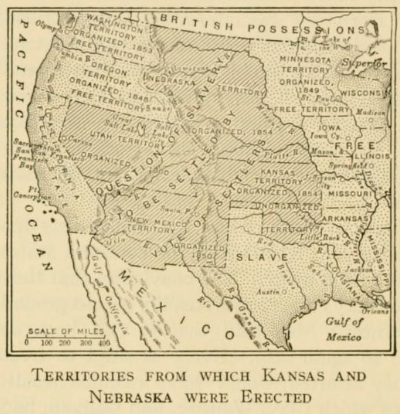

3. Congress finally created the Montana Territory in 1864. Although there was a territorial government & courts, its non-native population was mostly ungoverned gold prospectors, ranchers, & vagabonds. Stepping into the void came an informal constitutional order.
1. This week’s edition of #50Weeks50Constitutions heads to the home state of legendary newsman @tombrokaw and famed NFL kicker @adamvinatieri. That’s right, we are heading to South Dakota, the #MountRushmoreState!
2. South Dakota is one of the many states formed from the Louisiana Purchase, but it took a while. The Dakotas did not become a separate territory until 1861 and statehood wasn’t achieved until 1889, but SD was more active in pushing for statehood than ND. 

3. The real push began after the capital moved north to Bismarck, which led people "far away" in the South to hold a convention in Huron in 1883. This called for another, constitutional, convention later that year in Sioux Falls to draft a constitution and petition for statehood.
1. This week’s edition of #50Weeks50Constitutions travels to one of the least visited states in the country: North Dakota. The #PeaceGardenState, & home of Roger Maris, still operates under its 1889 Constitution, though it has been amended frequently over the intervening decades. 

2. The U.S. gained control over the land that would eventually become ND through the Louisiana Purchase, but it took a while for the push for statehood to really get going. Though Lewis and Clark wintered there during the westward portion of their journey. 

3. It was not until March 1861 that the federal government officially created the Dakota territory and set up the basic form of American government there. Lincoln appointed the first governor, but the legislature and many local officials were popularly elected.
1. Got a Rocky Mountain High? Forget any other intoxicant, Coloradans have been high on their state constitution for almost 150 years. But it wasn’t easy at first. #50Weeks50Constitutions tells a story beyond the document’s (& the state’s) four corners.
2. Originally entirely part of Mexico, by 1858 what is now Colorado was split between the Kansas, Nebraska, New Mexico, & Utah territories. 

3. As often happened out West, things got interesting once someone struck gold, which happened in 1858. Prospectors then flooded into an area that included what would become the city of Denver.
1. This week’s edition of #50Weeks50Constitutions travels to the home of the College Baseball World Series & Payton Manning’s favorite audible. That’s right, we are heading to Nebraska, the #CornHuskerState, with their unicameral legislature—but that wasn’t always so.
2. The U.S. bought the land that would eventually become Nebraska in the Louisiana Purchase. It was shuffled around & governed by different territories until the Kansas-Nebraska Act of 1854 which officially created the Nebraska Territory & set up a basic government. 

3. This government included a three-member Supreme Court, a Governor appointed by the President, and a bicameral Legislature. This Act set the territory on the path to statehood, but it was not a smooth path and was delayed by the Civil War.
1. Feeling lucky? Constitutionally, & as Mark Twain helped transcribe, for a while Nevada did not. #50Weeks50Constitutions digs into the Silver State’s legal roulette, territorial bluffing, & anarcho-capitalist hold ‘em, only to settle on a long constitutional winning streak.
2. Acquired (taken) from Mexico in 1848, Congress placed almost all of what is now Nevada in the Utah Territory in the Compromise of 1850. But the rough-necked folks settling the Carson Valley resented this arrangement, dominated by Mormans in Salt Lake City.
3. In truth, the next decade had an ebb & flow of Salt Lake’s laissez-faire neglect vs attempts at direct control. Along the way Nevadans alternatively petitioned Congress for their own territory or tried to establish their own government Iceland-style.
daviddfriedman.com/Academic/Icela…
daviddfriedman.com/Academic/Icela…
1. This week’s edition of #50Weeks50Constitutions explores the unique constitutional history of a state that actually might be unconstitutional: That’s right! This week we explore the constitutions of the #MountainState, West Virginia.
prologue.blogs.archives.gov/2010/11/08/is-…
prologue.blogs.archives.gov/2010/11/08/is-…
2. West Virginia was originally a part of Virginia, and subject to VA’s first three constitutions, but geographic tensions existed, especially in terms of apportionment, taxation, and voting. Check here for a refresher on Virginia’s constitutions:
3. Before the Declaration of Independence there was a discussion of adding a 14th Colony of Vandalia. This colony would have covered much more land than what is now West Virginia, but this movement did not succeed.
wvculture.org/history/journa…
wvculture.org/history/journa…
1. What’s the matter with the Kansas Constitution? Today nothing more than elsewhere. But in the 1850s you’d have to ask *which* Kansas Constitution. On #50Weeks50Constitutions we’re touring some wild constitutional history that’ll teach you we’re not in Bleeding Kansas anymore.
1. No, Oregon’s constitution did not die of dysentery. This week on #50Weeks50Constitutions we journey down that Trail. The state (which locals will remind you is pronounced Or-ih-gEn”) adopted its constitution in 1857 & stuck with it, though with many amendments over the years.
2. The US AND UK jointly possessed “Oregon Country” from 1818 until 1846. This uneasy equilibrium extended all the way from Alaska (Russia) to California (Spain then Mexico). The non-native presence was virtually non-existent, with the Hudson’s Bay Co having the biggest impact. 

3. After a couple decades things suddenly went very Americana. In 1840 there were 150 US citizens in Oregon Country. 5 years later that grew to 5000 with most settling in the Willamette Valley. Then a 1846 treaty left the land south of the 49th Parallel under complete US control.
1. Minnesota nice? Oh for cute’s sake! That’s just an ol’ stereotype, don’ cha’ know. Today on #50Weeks50Constitutions we’ve got a state with 2 conventions for one constitution. It was all because those silly men in St. Paul couldn’t get along . . .
2. MN was the last state formed out of the old Northwest Territory, under the NW Ordinance. But only the land east of the Mississippi (including good ol’ St. Paul). To the west, the land first came into U.S. hands with the Louisiana Purchase (including big time Minneapolis). 
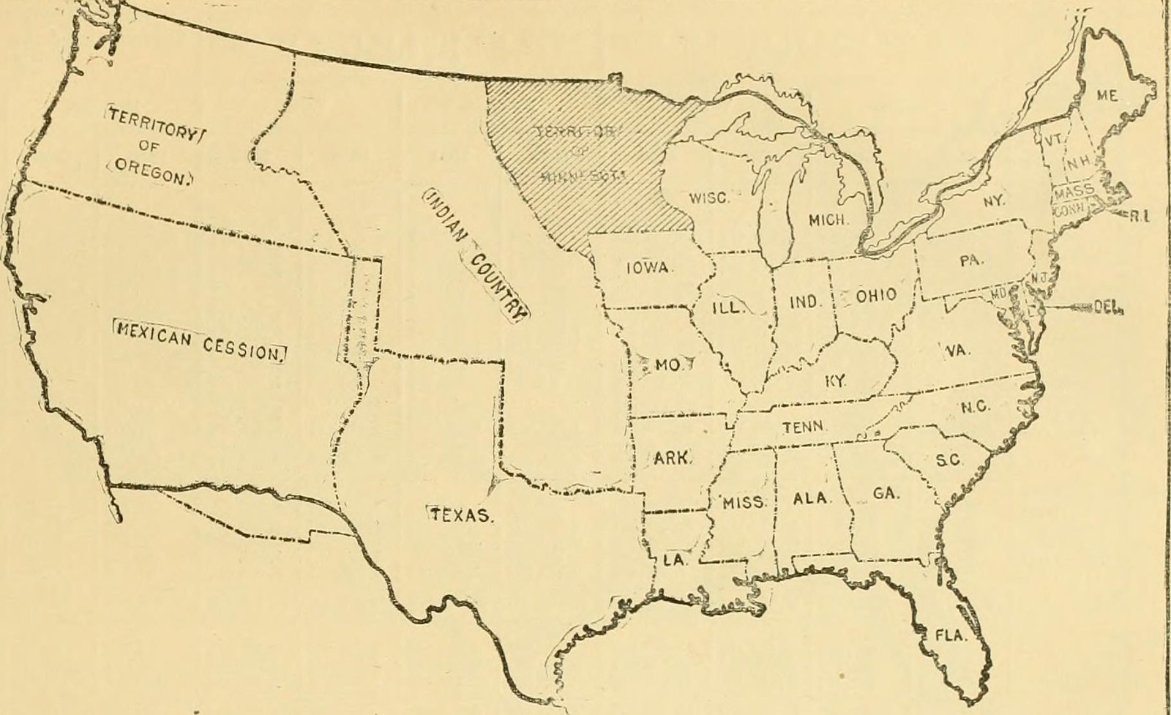
3. Only a territory in 1849 (& 3 times the size of what it became), statehood quickly loomed. Minnesotans needed a constitution. There was an election of delegates to go to St. Paul & hammer out a draft. (Fun Fact: St Paul's original name was Pig's Eye).
growlermag.com/the-not-so-com…
growlermag.com/the-not-so-com…
1. This week’s edition of #50Weeks50Constitutions will have you saying #Eureka! Well, maybe that’s just me dreaming in winter about a hotel you can’t leave with some suffer girls. Anyway, stay here & you’ll get some #goldnuggets about the constitution for the State of California.
2. The territory now known as California was under Spanish control from the mid-1700’s until 1822, when Spain ceded it to Mexico after Mexico gained independence. But the Mexican government was more interested in territory closer to the capital. 

3. This worked well for the U.S. to achieve Jefferson’s vision of an entire Pacific coast populated by Americans. From the 1840s on there was a big push of immigrating from elsewhere in the country to California.
1. This week’s edition of #50Weeks50Constitutions explores the constitutional history of Wisconsin, the land of milk and cheese, or so I’m told. Wisconsin is unusual as it is one of the few states to only have had a single approved constitution.
2. While Wisconsinites have only approved one constitution, they rejected the first draft sent to them in 1847. This constitution was rejected because of three controversial provisions borrowed, in part, from the Texas Constitution.
3. The three provisions concerned the chartering of banks, the protection of some real property from execution during bankruptcy, and the protection of property rights for married women. The drafters learned from this and did not concretely address the issues in the next version.
1. Is this Heaven? No, but it is Iowa. Today #50Weeks50Constitutions drives our combine to the Hawkeye State, whose constitutional history got off to a jerky start, but stabilized quickly & hasn’t changed much since.
2. Congress manufactured the Iowa Territory in 1838, chiseling it out of the Wisconsin Territory. There weren’t all that many settlers there in those days, but population quickly swelled. By 1844, with perhaps 75,000 residents, statehood looked like an option. 

3. But to have a state, you need a constitution. So a bevy of delegates met in Iowa City. The document they drafted was fairly standard for the time. It had a copious bill of rights, a separation of powers clause, & a guarantee of public education.
1. Yeeha! This week’s edition of #50Weeks50Constitutions take us to the #LoneStarState. Texas’ constitutional history begins before it joined the union. After gaining independence from Mexico the Republic of Texas adopted its own constitution.
2. 59 delegates met in San Antonio to draft a Declaration of Independence from Mexico & a Constitution. The drafters were heavily influence by the U.S. Constitution, as is evident from the preamble, & the overall structure was comparable to other constitutions of the day. 

3. The drafters placed the Declaration of Rights first in the constitution gave it 17 sections of mostly standard rights. Though, this independent constitution had both a “proto-Baby Ninth Amendment” & a Baby 10th Amendment. Learn more here:
libraries.mercer.edu/ursa/handle/10…
libraries.mercer.edu/ursa/handle/10…

1. Our smallest state took its time getting a constitution. That wasn’t until 1843. What took so long? Elite rule, civil disorder, royal decrees, & more! #50Weeks50Constitutions travels to what Federalists termed “Rogue Island” & George Washington said “baffled all calculation.” 
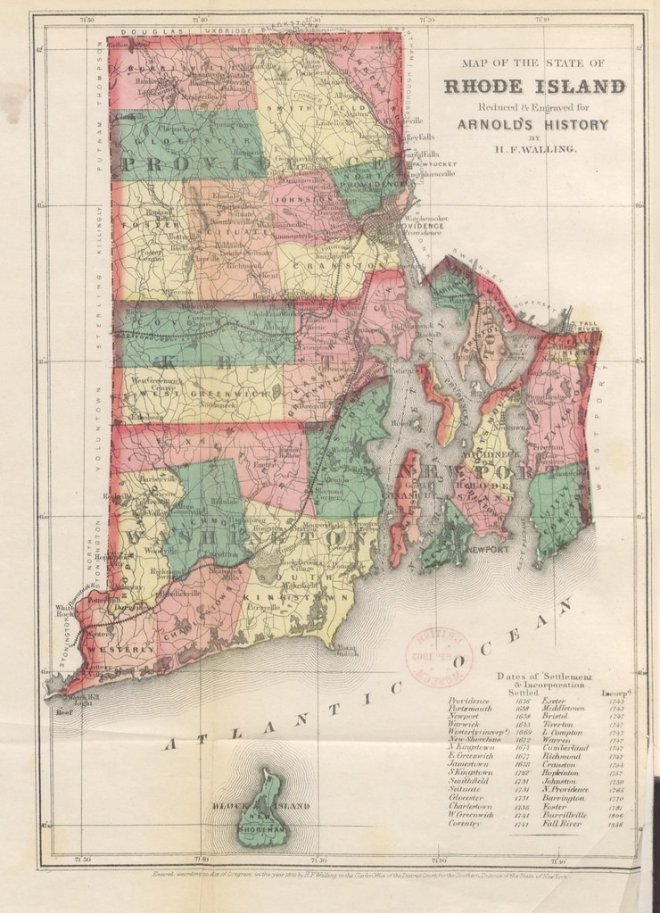
2. A grouping, of sorts, of small colonies received a Royal Charter in 1663. It gave Rhode Islanders a large degree of self-rule. Tho there were property qualifications to vote, most adult males met them, & the colony was seen as the most “democratic” by 1776.
3. I don’t want to say that Rhode Islanders were smugglers, but with their nautical nature, Rhode Islanders were smugglers. Thus, when the British started passing stuff like the Intolerable Acts, taxing & regulating all kinds of trade, the colony broke for Independence hard.
1. Florida, man. This week’s edition of #50Weeks50Constitutions explores the constitutional history of the #SunshineState. Originally a Spanish territory & subject to the Spanish constitution of 1812, it was ceded to the U.S. in 1821. But it took a few years to become a state.
2. A convention was (finally) convened in 1838, with 56 delegates representing a population sharply divided on whether Florida should even be a state & whether it should be kept as one or split into two. With hindsight, we know the answer to both queries.
3. The convention borrowed extensively from other states, especially Alabama. Most debates over the structure of government & rights had long been settled (except the slavery issue) so the main debate was over whose interests should be primary: bankers or farmers.


